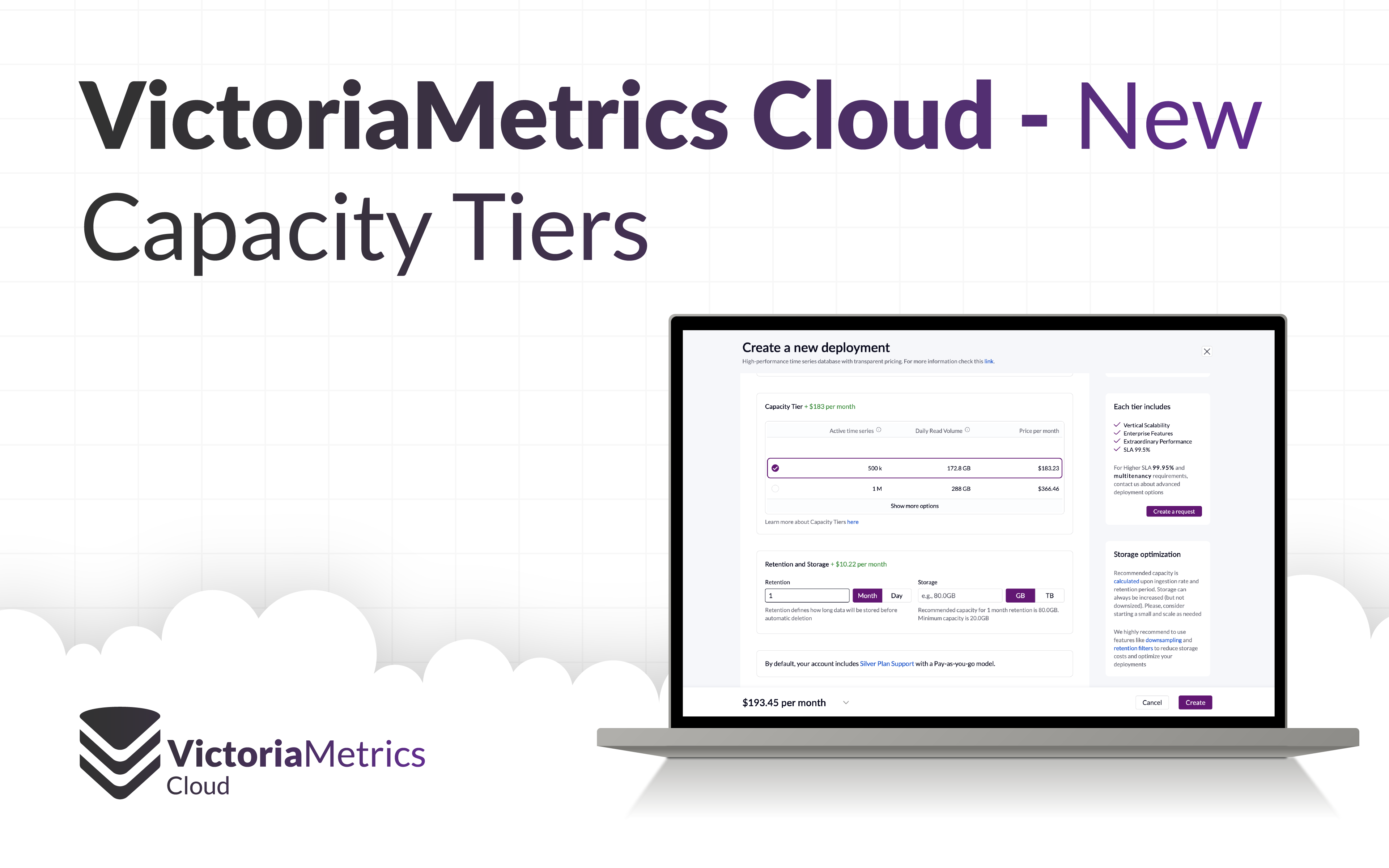
Featured Post
New Capacity Tiers in VictoriaMetrics Cloud
VictoriaMetrics Cloud introduces a reworked set of Single-Node Capacity Tiers, built from fresh benchmarking to provide a clear progression of compute power. The new tiers offer significantly more CPU and memory, narrower gaps between sizes, and consistent pricing.